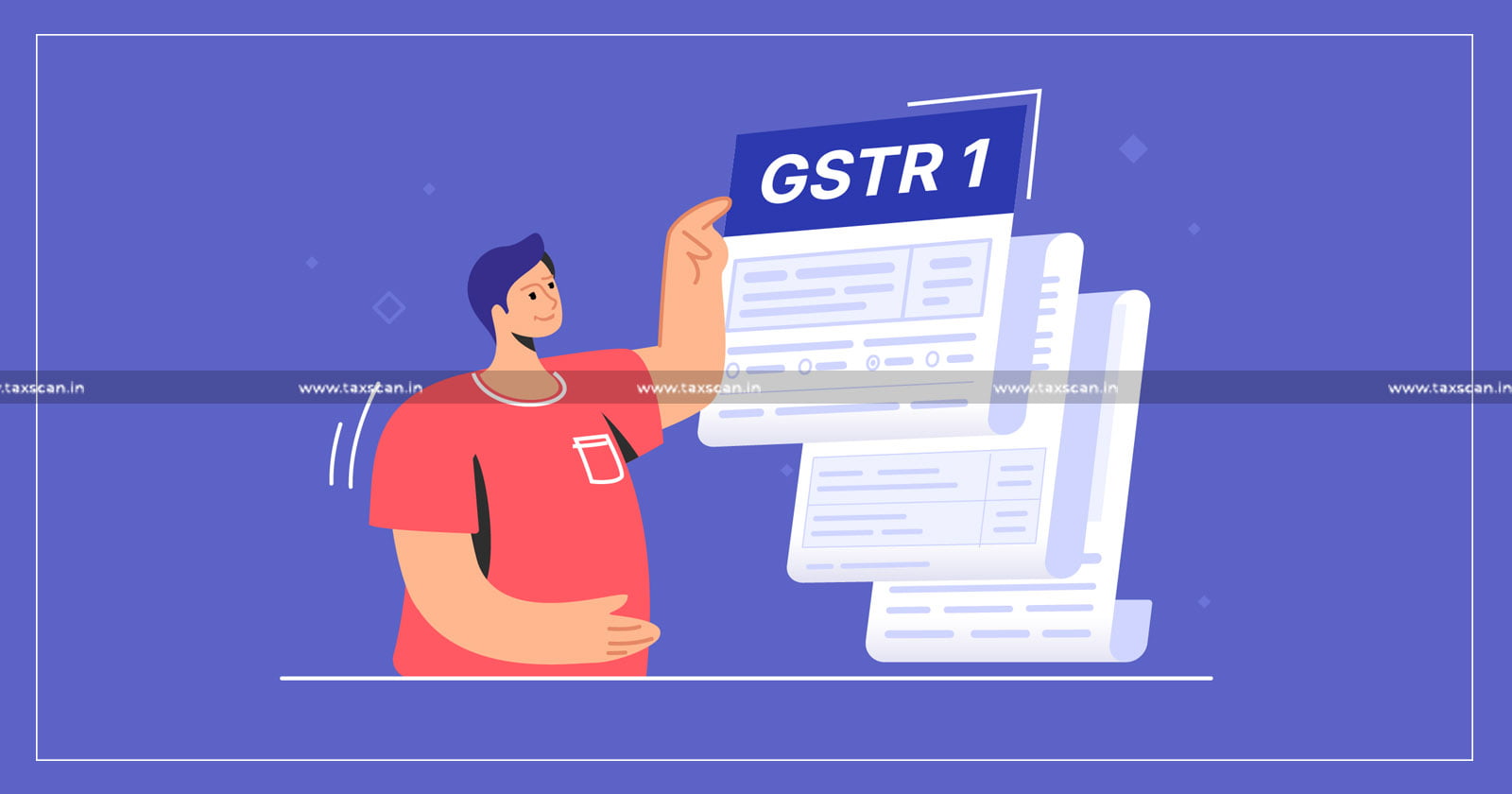GSTR-1 Late Fees: Baseless Punishment or Basic Requirement for Smooth ITC Claims?
A Head-First Dive into the Late Fees under GST for Delayed Filing of GSTR-1

GSTR-1 Late Fees – GSTR-1 – Late Fees – Baseless Punishment or Basic Requirement – Baseless Punishment – taxscan
GSTR-1 Late Fees – GSTR-1 – Late Fees – Baseless Punishment or Basic Requirement – Baseless Punishment – taxscan
Picture this: A business owner scrambling to meet every deadline under the sun—taxes, paperwork, day-to-day operations—only to discover a massive penalty for submitting one of their GST returns a bit behind schedule.
If you’re unfamiliar with India’s Goods and Services Tax system, that might not sound like a big deal. But for anyone who’s ever dealt with GST compliance firsthand, it’s pretty alarming. Even people who’ve never missed a tax deadline can appreciate just how steep these penalties feel, especially when no direct tax payment is actually delayed by GSTR-1.
Taxology India has recently tweeted,
Speaking with small business owners, they describe these penalties as nothing short of a rude awakening. More than a few have asked the question: What’s the point of charging such a hefty fee for GSTR-1, when there’s already a late fee for GSTR-3B?
Specifically, we are talking about a late fee of INR 1,69,140 for filing GSTR-1 late.
After all, GSTR-3B is where the actual tax liability gets paid. File that late, and it’s obviously going to impact government revenue. But GSTR-1 is just a statement of invoices—a record of sales. The government doesn’t directly collect any money through it.
Despite these criticisms, the authorities say there’s a reason for imposing a fee on late GSTR-1 filings. They argue that timely reporting keeps the system up-to-date, preventing chaos when a buyer is trying to claim input tax credit (ITC) and can’t find the corresponding invoice data, which is to be filed by sellers in their GSTR-1.
In conversation with Advocate Rupesh Sharma, Chennai, he expressed his view that, "The penalty imposed under Section 47 of the CGST Act, 2017, for late filing of GSTR-1 is fair as it ensures that suppliers file their GSTR-1 on time.
Although GSTR-1 isn't a return for payment of taxes, not filing it on time can lead to a situation where the purchaser is denied input tax credit. It is therefore important that suppliers file GSTR-1 within the prescribed time limit. If the non-filing of GSTR-1 by the supplier has repercussions on the purchaser through no fault of their own, the supplier must also be held accountable, and Section 47 addresses this to a certain extent.
I do not see any issues with this section", shedding light on the practical implications.
But are the hefty fines truly justified, or does the system need a little more empathy for everyday entrepreneurs?
GSTR-1: Role and Relevance
To give a bit more context, GSTR-1 is where businesses list every outward supply made during a specific tax period. Each invoice appears there, and that’s how customers on the other end can verify their own eligible ITC. If the seller doesn’t file GSTR-1 on time, it can throw off the buyer’s books, potentially delaying their credit claims. So, the government insists that punctual reporting keeps everything ticking smoothly.
It is hard to deny that GSTR-3B is the most critical return for tax authorities because it directly involves paying taxes. If you file GSTR-3B late, you’re holding onto government revenue longer than you should. That explains the fine. But with GSTR-1, it feels more like a data collection exercise. This is where the outcry comes in: is the penalty for GSTR-1 just a money-making tactic or does it really discourage harmful delays?
Why the Department Insists on Delayed GSTR-1 Penalties
Accuracy and Data Integrity
By filing GSTR-1 on time, the government sees real-time updates of how goods and services are moving. This also helps detect discrepancies if a seller’s filing doesn’t match the buyer’s records. It also helps with ITC reconciliation from time to time.
Fake Invoicing Tendencies
Over the years, authorities have come down hard on fake invoice scams. When GSTR-1 is delayed, it leaves gaps in the system that can be exploited. Timely filing, they say, seals those voids of deceit.
Timely Compliance
If the only significant penalty were for GSTR-3B, some filers might ignore GSTR-1 until it’s convenient. By slapping a fee on GSTR-1 delays too, the government aims to enforce a culture where all returns are taken seriously.
Still, many honest taxpayers insist that these fees feel excessive—particularly small enterprises that operate on razor-thin margins. On more than one occasion, business owners have suggested that they’d understand a nominal charge, but the amounts often go far beyond what they believe is fair.
Core Criticisms
No Direct Loss to Exchequer
Since no money goes directly into government coffers with GSTR-1, the typical rationale for a penalty (lost revenue) doesn’t really apply here.
Double Penalties
Businesses are already paying penalties for delayed GSTR-3B. Why penalize them again for a different form that mainly contains invoice details?
Complex Compliance Rules
The Indian GST system continues to evolve. With multiple forms, frequent rule tweaks, and occasional portal outages, missing a deadline now and then isn’t always a reflection of negligence. For a small firm with limited staffing, the administrative overhead can be crushing.
Discouragement for Small Businesses
The financial impact of these fees can be severe enough to discourage smaller players or new entrepreneurs. High penalties could scare them away from even attempting to expand or experiment with new markets.
Why Some People Say “Remove Late Fees for GSTR-1”
Quite a few professionals, including chartered accountants, tax consultants, and the businesses themselves, have been vocal about doing away with GSTR-1 penalties altogether. Their argument is straightforward: if the government isn’t losing actual revenue from a late-filed invoice statement, the penalty should either be extremely minimal or nonexistent.
Recommendations/Suggestions
Nominal Charges or Tiered Penalties
A sliding scale where the first few days of delay incur a negligible charge, rising only for prolonged non-compliance.
Amnesty Periods
Occasionally, the government does announce schemes waiving or reducing late fees for those who are behind. Making these waivers a regular feature could be a lifeline for struggling businesses.
Focus on the Bigger Picture
Perhaps the energy spent chasing GSTR-1 late fees could go into policing more serious offenses, like unpaid GSTR-3B liabilities or repeated defaulters who might be gaming the system.
Some small business owners say they’d happily file on time if the process weren’t so convoluted. They note that the government portal sometimes experiences technical hiccups, especially near deadlines. If a business attempts to file and the system crashes, they might still wind up paying a late fee, which feels inherently unfair.
Balancing the Government’s Interests with Real-World Concerns
In principle, the objective behind GST was to simplify India’s indirect tax landscape. In reality, many smaller firms juggle multiple filings each month or quarter (depending on their turnover). They often work with minimal staff, and losing a day or two on system downtime or unexpected hurdles can snowball into missed deadlines.
On the flip side, from the government’s perspective, timely GSTR-1 data helps keep the entire network transparent. Buyers want to see their eligible ITC promptly, and the overall chain of transactions gets easier to track.
If too many suppliers habitually delay GSTR-1, chaos may ensue, and certain unscrupulous actors might exploit that delay to engage in fraudulent ITC claims.
However, common sense suggests that a delayed GSTR-1 filing, which impacts nobody’s tax liability, should not carry the same weight or fee structure as late GSTR-3B. At the very least, there should be a proportionate approach, perhaps linking late fee amounts to the size of the business or the length of the delay.
Potential Paths Forward
Since policy changes are in the works gearing up for Budget 2025-26, here are a few directions that might strike a better balance:
Adjust Fee Structures
Instead of a flat rate, tie the penalty to the scale of the business or the duration of the delay. A micro-enterprise making a small slip could pay a much lower amount than a large company ignoring compliance for months.
Unified Filing System
Some experts dream of a single, integrated GST return that covers everything a business needs to declare, from invoice details to tax liabilities. If we ever reach that point, there’d be no need for separate late fees.
Compliance Incentives
Instead of emphasizing penalties, the government could reward punctual filers. Those who consistently file on time might see benefits like reduced scrutiny or streamlined refunds.
Reliable, User-Friendly GST Network
The GST portal must remain stable, particularly during peak filing windows. If there’s ever significant downtime, the system could automatically pause the penalty clock for affected businesses.
Looking Ahead
There is no shortage of talk around possibly removing—or at least scaling back—late fees for GSTR-1. With every new financial year or upcoming budget announcement, professionals and taxpayers collectively hold their breath, hoping for amendments that reflect real-world needs. Some social media users and industry groups are vocal about scrapping GSTR-1 late fees entirely. Others want a more flexible structure that recognizes genuine hardship versus willful neglect.
Over the last few years, the GST Council has offered sporadic amnesty schemes. During pandemic disruptions, for example, a few deadlines were extended or late fees were briefly waived. This proves that the authorities can adapt to unprecedented circumstances. Perhaps these temporary waivers foreshadow more permanent changes in the future to ease compliance burden.
Still, one thing is certain: if the government wants businesses to flourish, it might need to refine the compliance burden so that it does not hinder growth. In the end, the mission of GST—to streamline taxation—will thrive only when the real-world complexities of running a business are taken into account.
Final Thoughts
Ultimately, the late fee of INR 1,69,140 for overdue GSTR-1 highlights a bigger question about fairness and practicality in India’s GST framework.
It may be time for the authorities to revisit the rationale behind penalizing GSTR-1 delays—especially when a separate penalty for late GSTR-3B already exists.
A revised approach that is more flexible, proportionate, and in line with the actual financial impact could help ensure that taxation is fair for everyone involved.
Support our journalism by subscribing to Taxscan premium. Follow us on Telegram for quick updates


